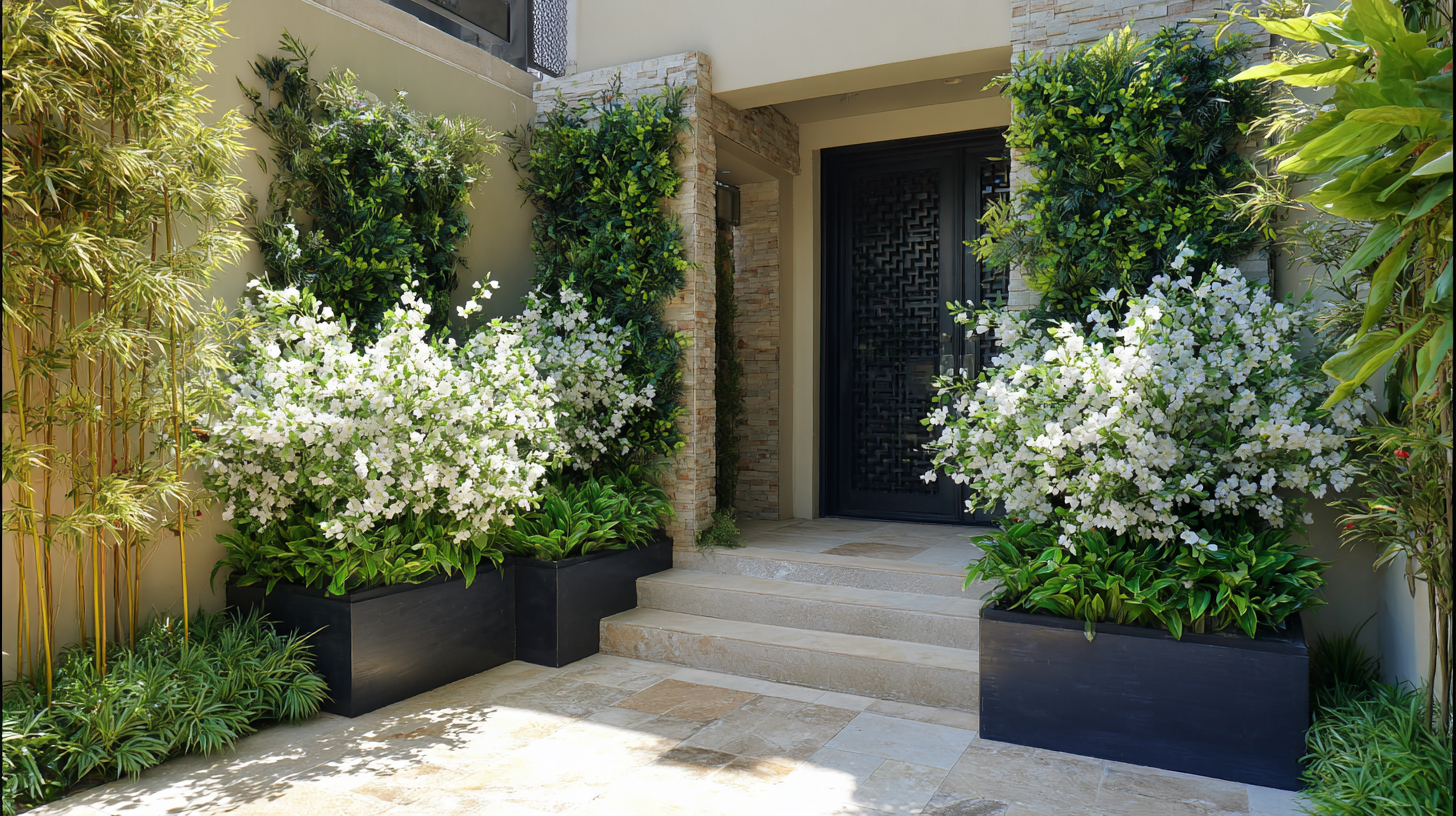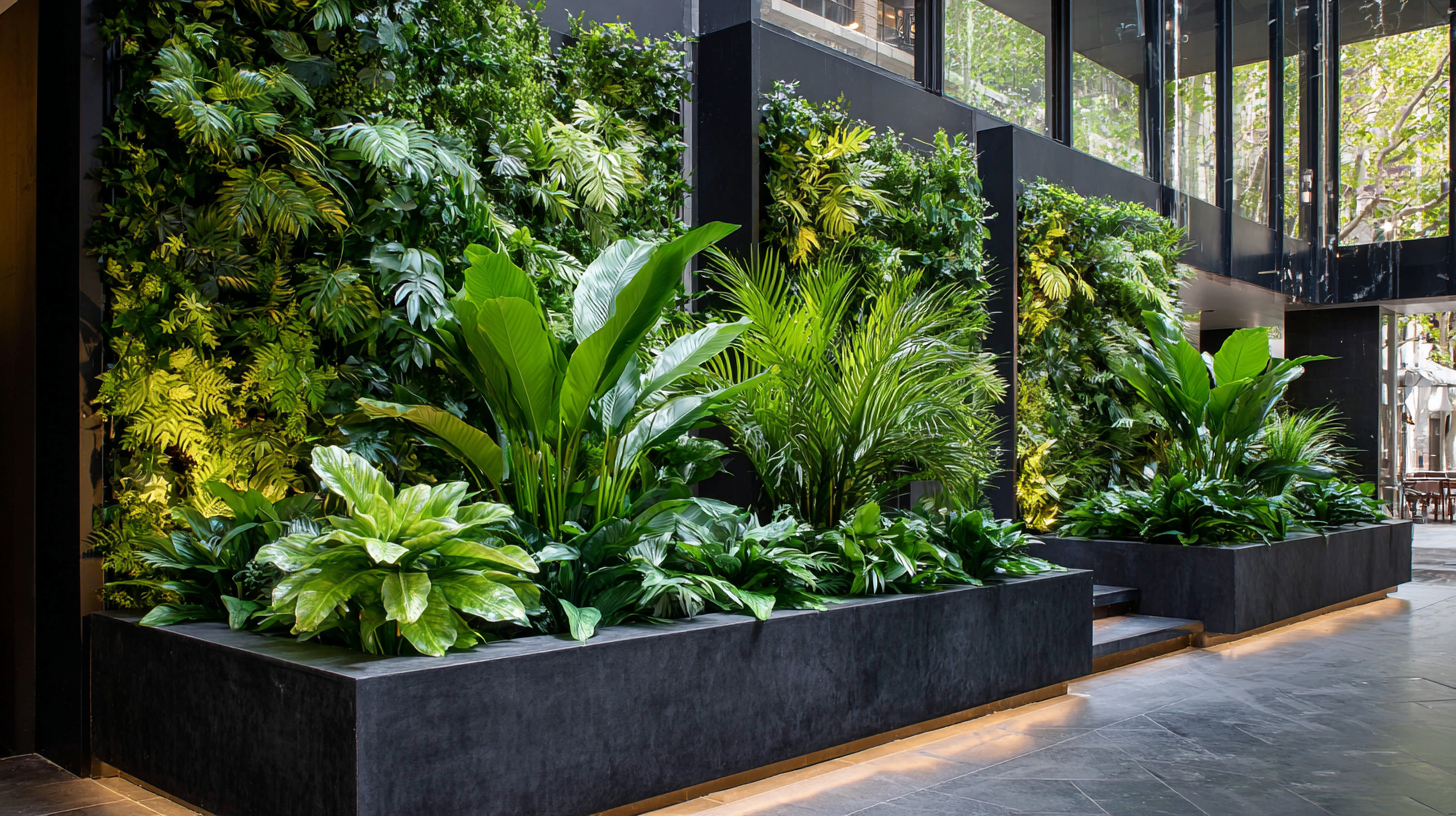
In recent years, the landscaping industry has witnessed a significant shift towards the incorporation of Exterior Artificial Plants, driven by advancements in technology and a growing emphasis on sustainable design practices. According to a report by MarketsandMarkets, the artificial plants market is projected to reach $2.9 billion by 2025, highlighting a surge in consumer interest as more homeowners and landscapers seek low-maintenance, weather-resistant alternatives to natural plants. These innovative solutions not only enhance aesthetic appeal but also address environmental concerns, as they require no watering, fertilizers, or pesticides. This transition reflects a broader trend in modern landscaping design, where integrating high-quality artificial greenery offers a practical and stylish way to elevate outdoor spaces while minimizing ecological impact.

Incorporating artificial plants into modern landscaping design has grown increasingly popular, primarily due to their numerous benefits. According to a 2022 report by the National Association of Landscape Professionals, approximately 40% of homeowners are opting for synthetic plants to enhance their outdoor spaces. One significant advantage is the low maintenance required for artificial plants, which can save homeowners both time and money. Unlike natural plants, which often require regular watering, pruning, and fertilization, artificial plants remain vibrant year-round without any upkeep.
Furthermore, artificial plants contribute to sustainable landscaping practices. A study conducted by the American Society of Landscape Architects found that using artificial foliage can help reduce the environmental impact associated with water consumption and pesticide use. With growing concerns about climate change and water scarcity, opting for non-natural alternatives can lead to a more eco-friendly landscape design. By choosing high-quality synthetic options that mimic the look of real plants, homeowners can achieve a lush aesthetic while making sustainable choices for the planet.
| Dimension | Description | Benefits |
|---|---|---|
| Aesthetic Appeal | Artificial plants mimic the look of real plants, enhancing visual appeal. | Improves overall landscape design, creating inviting environments. |
| Maintenance | Require minimal upkeep compared to real plants. | Saves time and costs associated with care and replacement. |
| Durability | Resistant to weather, UV rays, and pests. | Long-lasting investment for landscape projects. |
| Variety | Available in numerous styles, colors, and types. | Allows creative freedom in design concepts. |
| Seasonal Flexibility | Maintain consistent aesthetics throughout the year. | Eliminates seasonal variations typical with live plants. |
When it comes to modern landscaping design, selecting the right types of exterior artificial plants can significantly enhance the aesthetic appeal and functionality of outdoor spaces. Unlike traditional plants, artificial varieties offer versatility and durability, making them ideal for various climates and settings. From vibrant floral arrangements to lush greenery, the choices are plentiful. Consider incorporating UV-resistant options that maintain their color and texture, ensuring they look stunning year-round without the need for constant maintenance.
Another crucial factor in choosing exterior artificial plants is their size and placement. Opt for larger plants to create focal points and draw attention to specific areas, while smaller varieties can be used to add subtle accents in pathways or around seating areas. Mixing different textures and colors can also provide depth and interest to your landscape design. Additionally, look for plants that mimic the appearance of natural varieties, such as faux succulents or topiaries, to achieve a more organic feel. By carefully considering your selections, you can create a harmonious outdoor environment that reflects your personal style while enjoying the many benefits of artificial landscaping.
Artificial plants have emerged as a sustainable alternative in modern landscaping design, offering eco-friendly advantages that align with current environmental goals. According to a report by the National Association of Landscape Professionals, nearly 30% of homeowners are now considering artificial greenery for its low maintenance and water-saving attributes. Artificial plants do not require irrigation, fertilizers, or pesticides, which can significantly reduce water usage in regions facing drought. With landscaping accounting for approximately 30% of residential water consumption, the adoption of artificial plants can lead to substantial water conservation efforts.
Moreover, the sustainability of artificial plants extends beyond water savings. A study by the Environmental Protection Agency highlighted that the production of traditional plants involves energy-intensive processes, including transportation and upkeep. In contrast, high-quality artificial plants often utilize recycled materials and can be designed to last for years without fading or losing their appeal. As landscaping trends shift towards eco-conscious options, the integration of best exterior artificial plants supports not only aesthetic enhancements but also a commitment to reducing environmental footprints within urban and suburban spaces. Through the strategic use of artificial plants, homeowners can enjoy vibrant landscapes while actively participating in sustainable practices.
This chart illustrates the increasing preference for artificial plants over natural plants in modern landscaping design due to their eco-friendly advantages.
Caring for exterior artificial plants has become increasingly straightforward, thanks to advancements in materials and design. Unlike living plants, these high-quality replicas require minimal maintenance, allowing homeowners to enjoy the aesthetic appeal of greenery without the constant upkeep associated with traditional landscaping. The first step in maintaining your artificial plants is regular cleaning. A simple dusting with a soft cloth or a gentle rinse with water can help keep them looking vibrant and fresh. For materials like plastic or silk, a mild soap solution can remove any stubborn grime without compromising the colors and textures.
In addition to cleaning, strategically placing your artificial plants can enhance their durability and appearance. Choosing shaded or covered areas can prevent sun fading and extend their lifespan, while strategic positioning can create eye-catching focal points in your landscape design. With the right care, these plants not only maintain their beauty but also contribute to an inviting atmosphere year-round, making them an excellent choice for any outdoor space.

Artificial plants have revolutionized modern landscaping design, offering a unique blend of beauty and practicality. One inspiring example is the use of vibrant, lifelike succulents and cacti in urban gardens. These low-maintenance options not only add a splash of color but also create a modern desert aesthetic, perfect for rooftop terraces and small patios. Their durability against harsh weather conditions makes them an ideal choice for landscapes that require less upkeep while still providing a stunning visual impact.

Another captivating application of artificial plants is their integration into large commercial spaces such as office buildings and shopping malls. Towering artificial palms and meticulously crafted floral arrangements can transform ordinary lobbies into inviting green oases. These installations not only enhance the aesthetic appeal but also contribute to a more relaxed atmosphere, encouraging social interaction and customer engagement. By strategically placing artificial greenery, designers can create focal points that draw attention and enhance the overall ambiance of the space.
